Plants that are used for hedges have many benefits including creating privacy, delineating an area, and developing structural interest in the garden.
Imagine a hedge that not only achieves those goals but is also edible, medicinal, feeds and homes beneficial wildlife, all while being fragrant and gorgeous.
A rosemary hedge can achieve all the above and much more!
10 Reasons To Plant A Rosemary Hedge
1. Create Privacy with a Rosemary Hedge
Upright growing varieties of rosemary make excellent hedges. Most of them will grow up to 4 to 6 feet tall and 2 to 3 feet wide.
The tallest and one of the most dramatic rosemary varieties is ‘Tuscan Blue’ may grow over 7 feet tall. It also produces striking dark blue blossoms.
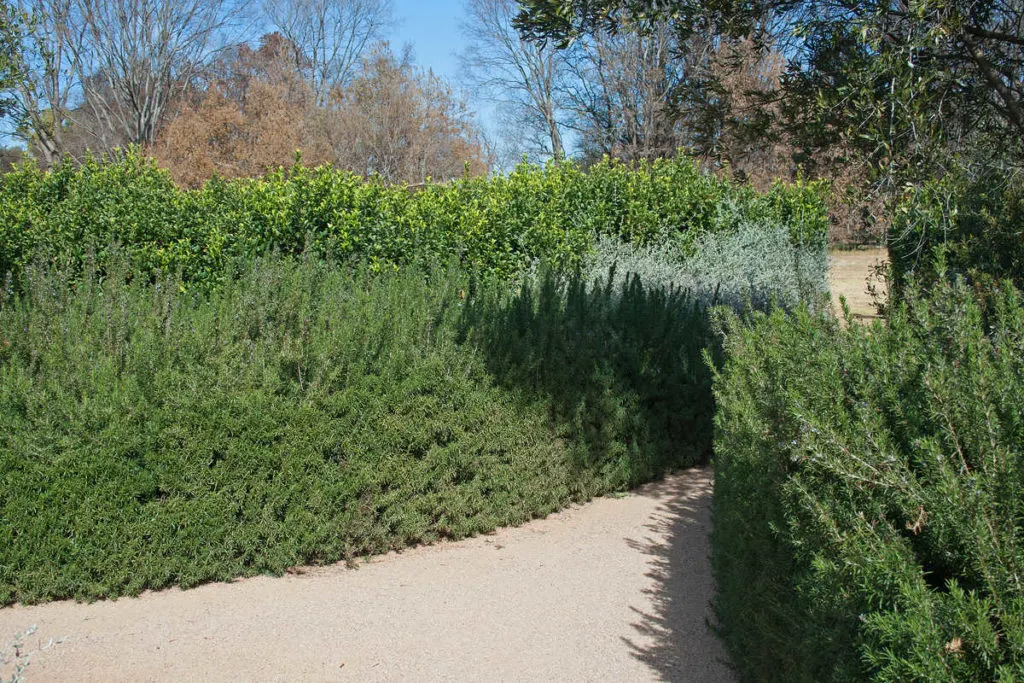
2. Delineate Garden Sections with a Rosemary Hedge
Rosemary handles shaping and pruning well. This makes it welcome in the formal garden.
As it attracts beneficial insects while repelling pests such as cabbage moths, mosquitoes, and flies, it is incredibly useful.
Surround the vegetable patch, edge a walkway, or grow a fragrant border around a patio.
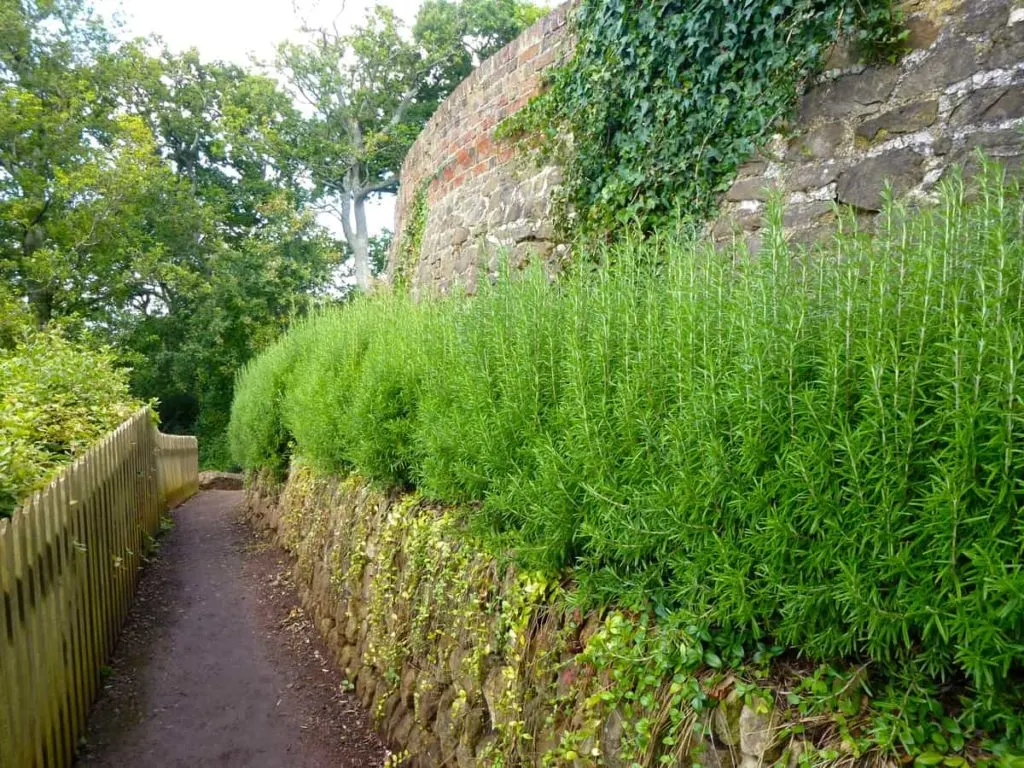
3. Use a Rosemary Hedge as a Fragrant Windbreak
Rosemary’s tough woody branches can take the wind. Its’ refreshing scent filters the air at the same time!

4. Rosemary In Blossom – Bring on the Bees & Butterflies
Rosemary blooms prolifically at the leaf axils on last year’s wood. Abundant tiny flowers arrive in shades of white, rose, purple, and blue, depending on the cultivar.
A Mediterranean herb of the mint family, rosemary is favored by many bees and butterflies.
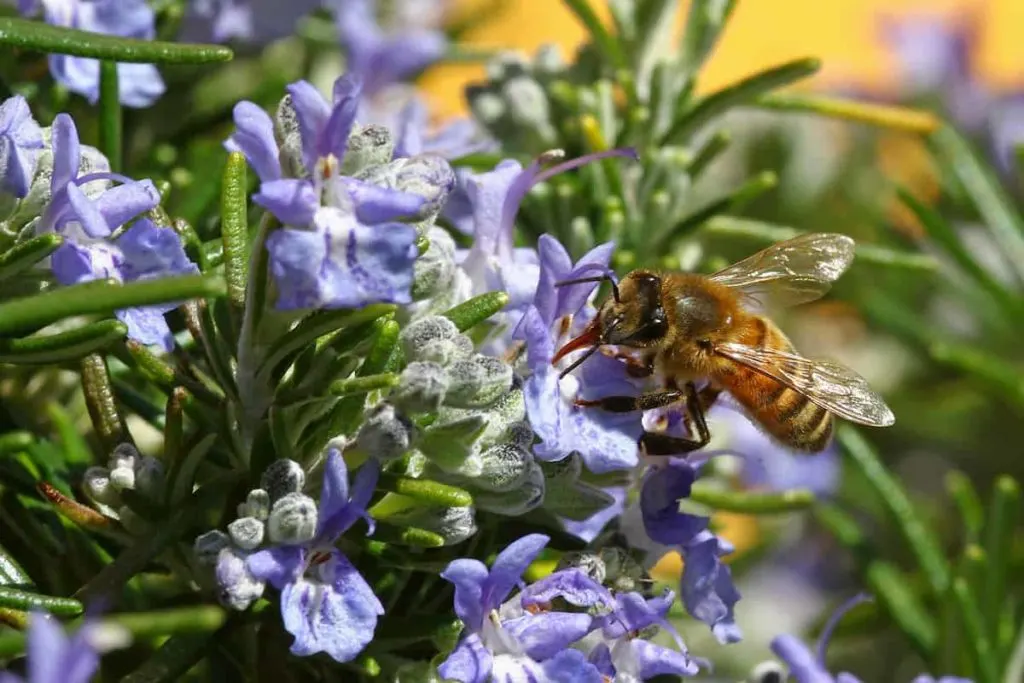
5. Beautiful in Drought, Wind, and Sun
Rosemary is strong and beautiful. Once established, this tough plant requires little additional water. Learn more about growing rosemary and other plants for drought tolerance.
In general, rosemary is hardy in zones 8 to 10, although cultivars, ‘Arp’ and ‘Blue Spires’, boast hardiness as low as zone 6.
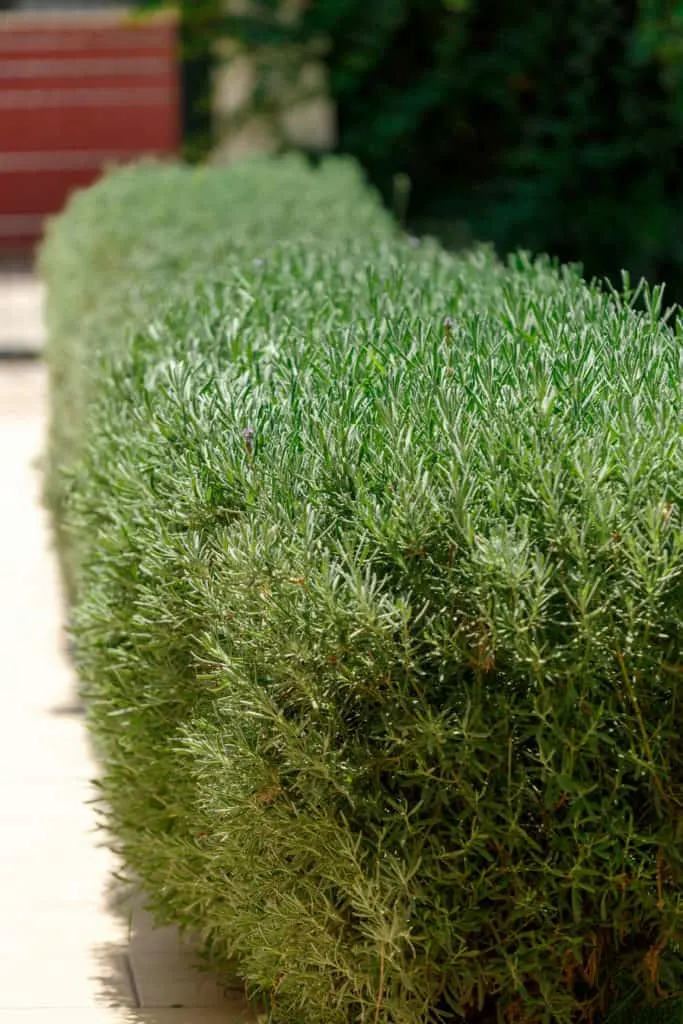
6. Heavenly Scented
Aromatherapy has been around for centuries, if not millennia. Rosemary is among the top essential oils used for its powerful aromatherapy benefits.
Historically, in the Victorian Language of Flowers, rosemary symbolizes remembrance. In fact, studies show that inhaling the fragrance of rosemary aids memory, brain health, and cognitive function.
Another wonderfully scented herbal hedge option, and great companion plant to rosemary, is lavender. Explore articles about growing a lavender hedge and lavender companion plants.
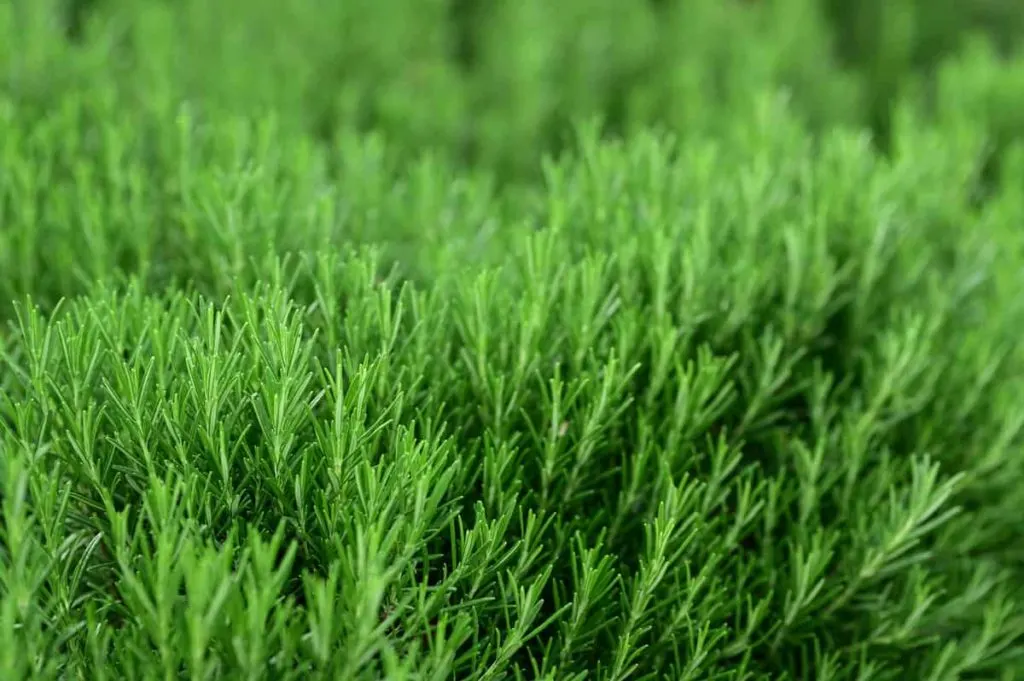
7. Rosemary, Break Out of the Ordinary
The culinary uses for rosemary are vast. Possibly, the most familiar is for flavoring poultry dishes and stuffing. Rosemary imparts its lively pungent aroma into many popular meat dishes as well.
The lovely refreshing spicy herb is also amazing with grilled, roasted, and stewed vegetables, soups, cheeses, oils, vinegars, dressings, and condiments. It is also wonderfully tasty used to infuse cooked grains and pilafs.
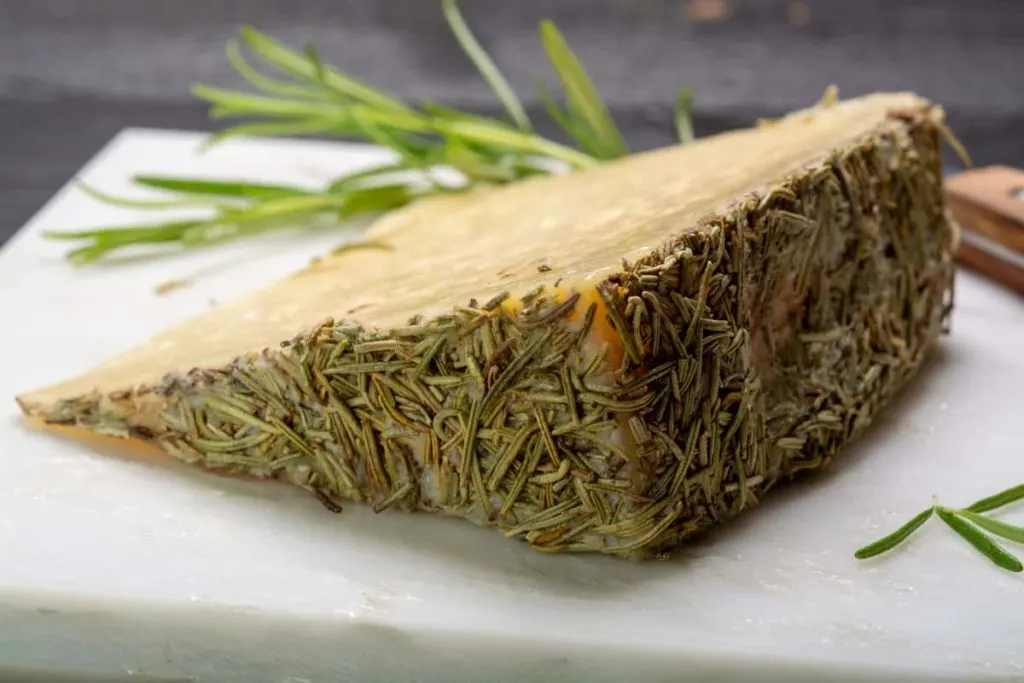
Although most rosemary plants carry blends of woodsy, sage, citrus, and pepper flavors, rosemary cultivars with notably exceptional flavor are, ‘Barbeque’, and ‘Spice Islands’.
Limited only by your creativity, an herbal rosemary hedge will provide enough rosemary to impart its deliciousness into all your favorite culinary experiments.

8. Food for Thought
Rosemary’s yummy zest is not only easy to add to many dishes, but it also has many healthful attributes.
Rosemary tea, for example, packs a healthful punch as it may aid indigestion, reduce blood sugar, and protect brain cells.

Tonics and teas, as well as using rosemary to add flavor to meals provides a powerful combination of antioxidant, anti-inflammatory, and antimicrobial activity as well. These are attributes found in rosemary leaves, stems, and flowers.
Rosemary tea with lemon or orange – A powerful pick-me-up known to increase mental focus.
Boil 1 ½ cup of water, add 1 teaspoon fresh or dried rosemary, with a wedge of lemon or orange. Try a cup before a challenging task.
9. Rosemary Is an Herbalist’s Dream
Essential oils, Extracts, and Tinctures, oh my! Think of the incredible herbal home remedies you’ll have to explore after pruning and shaping your gorgeous rosemary hedge!
Rosemary produces substances which are beneficial. Some of these benefits are anti-microbial, stimulating, aromatic, and astringent activity.
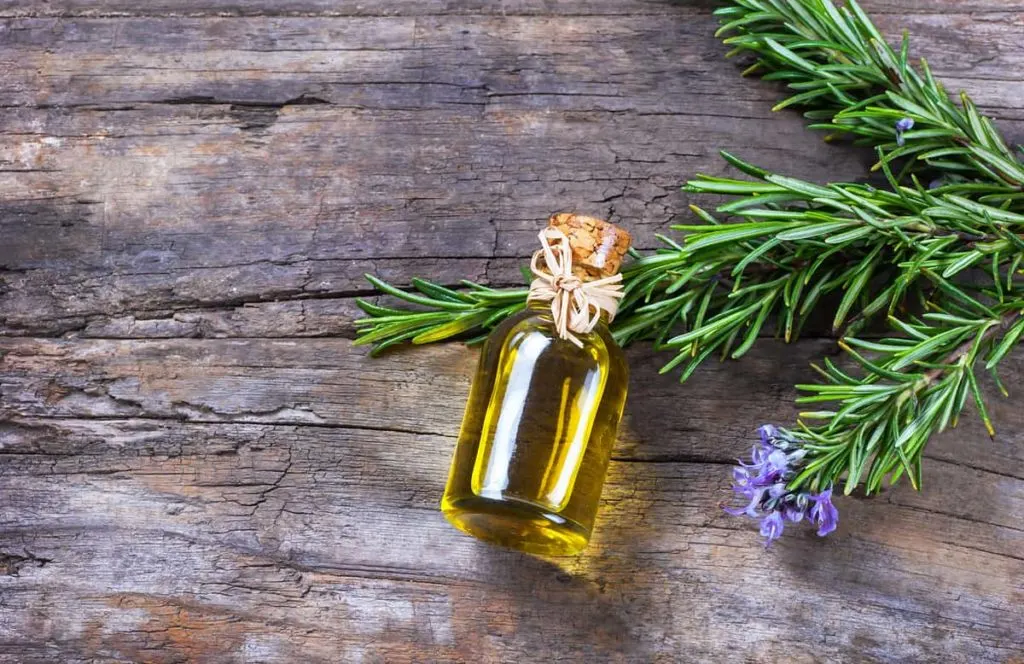
In fact, rosemary is one of the ingredients in the famous thieves’ oil which supposedly protected grave robbers during the black plague in medieval times. Due to its antibacterial and antimicrobial activity, it is a wonderful addition to homemade cleaning solutions.
10. Rosemary’s Durable Branches Make Wonderful Crafts
From fragrant wreaths to pretty bottles of infused oils, rosemary is a crafter’s delight. The abundant woody stems are also long lasting.

Best Rosemary Varieties for Hedges
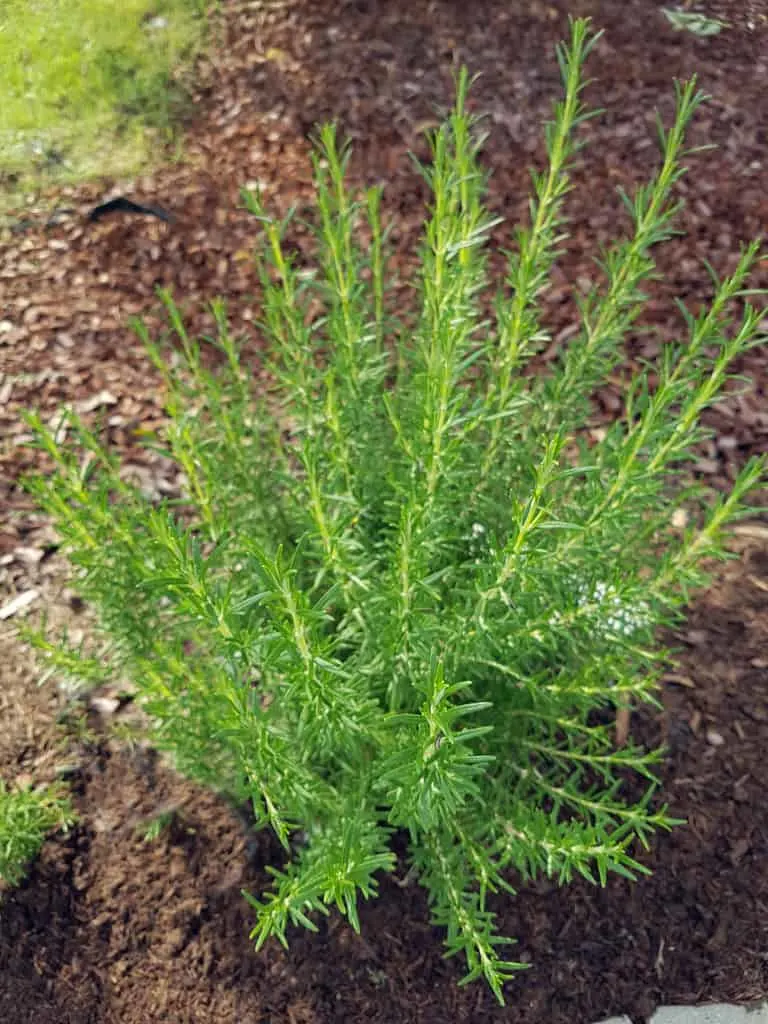
The best rosemary hedges are made from rosemary cultivars that grow in an upright form.
Some rosemary cultivars, on the other hand, have a cascading or creeping habit such as ‘Roman Beauty’. These cultivars are better suited for growing in a rock garden or on top of a wall or balcony.
Some of the best upright growing rosemary cultivars that are best for hedges include:
- Tuscan Blue
- Lady in White
- Majorca Pink
- Miss Jessopp’s Upright
- Spice Islands
- Blue Spires
Planting Rosemary
Choose a site that is slightly sheltered in full sun in hardiness zones 8 to 10. Be sure to check the hardiness zone of the cultivar you are planting so that your hedge will survive your worst winter weather.

Prepare the site by ensuring that it is weed free, and the soil is loose and well-draining. Rosemary tolerates poor soils, even sandy gravel.
Create a beveled edge or install edging to help keep the hedge weed and grass free while it grows in. This will also minimize future maintenance, having a nice edge to mow or trim up to without damaging the hedge.
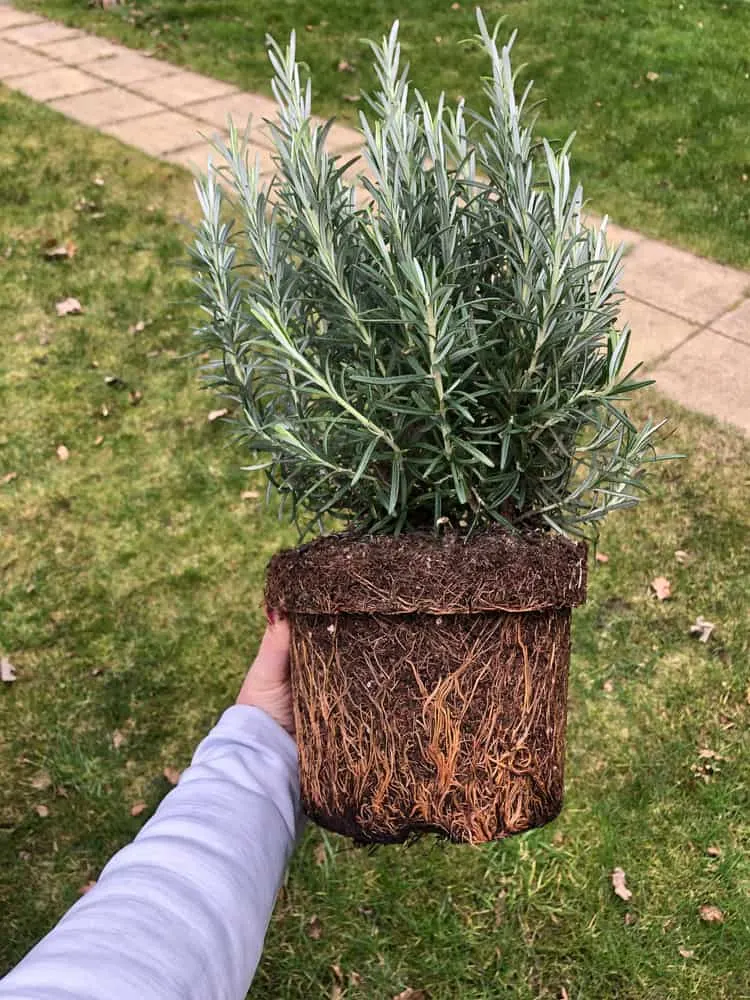
Dig holes for each plant at twice the size of the root ball. Snug each plant in place with soil and tamp it down.
Space each rosemary plant 50cm apart for a lighter hedge and space 35cm apart for a denser hedge.

Keep the soil damp for the first few months while the plants become established. Once they are established, water thoroughly in the fall to enable the plant to protect itself through the winter months.
Apply an ample layer of compost or bark mulch around young rosemary plants. This will help conserve moisture, suppress weed competition, and it also looks stunning!
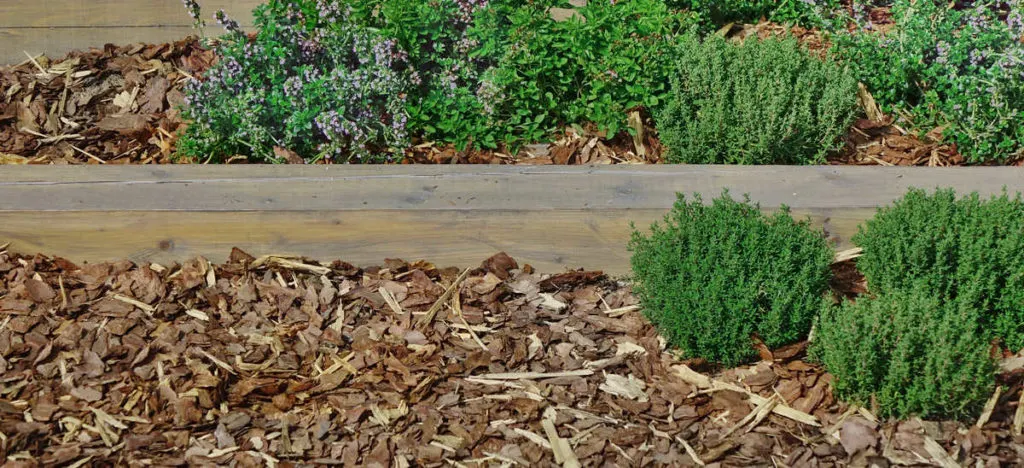
Sourcing Rosemary Plants
Rosemary can be propagated from seed or cuttings. Seeds take a long time, 14 to 21 days, to germinate, but this can be a cost-effective way to grow many rosemary plants for a hedge.
Alternatively, cuttings can be taken from young healthy stems and rooted in water. Once they are rooted, they can be transferred into pots with potting soil where they can grow on until planting time.
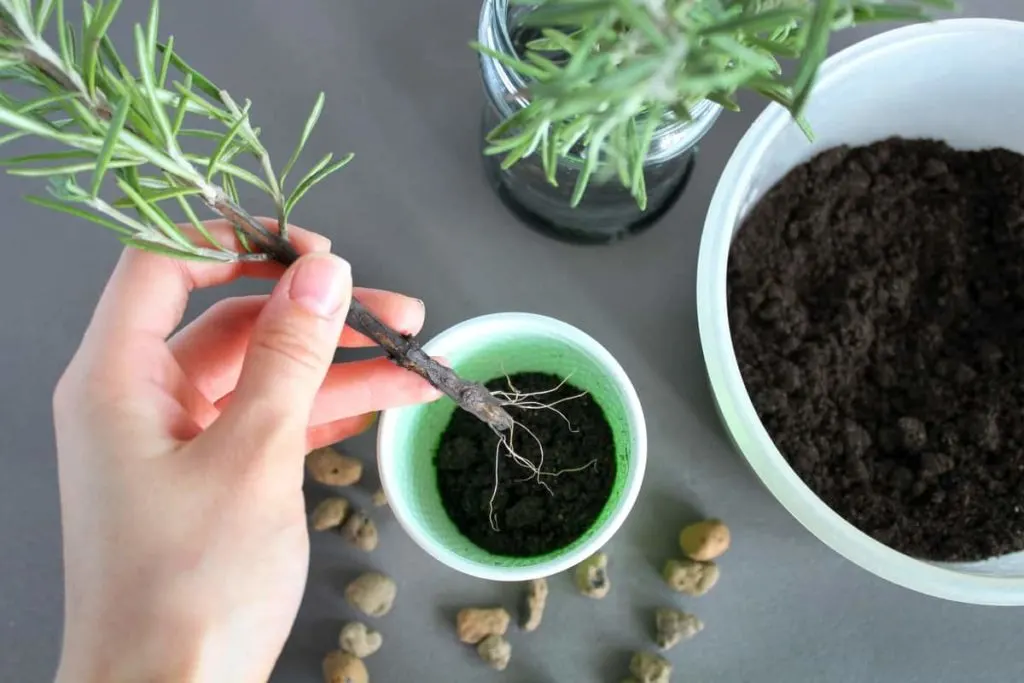
Either way, propagating rosemary yourself can be a fast and cost-effective way to produce many plants for a future hedge.
Another less expensive way may be to talk to your local nursery. They may be willing to start seedlings for you of your desired rosemary cultivar.
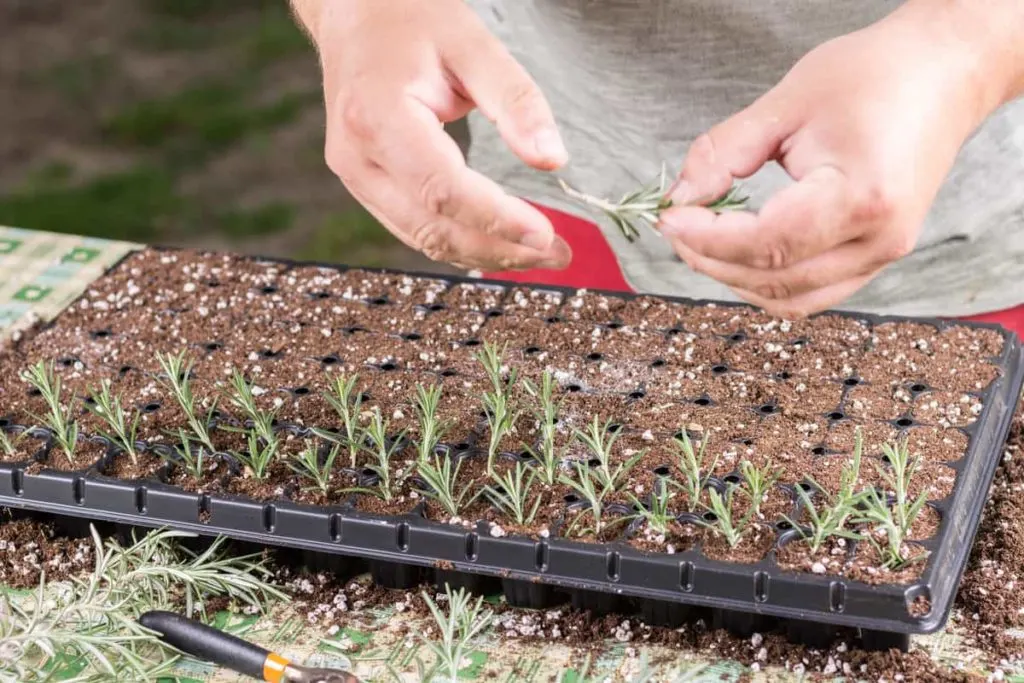
Buying seedlings rather than mature potted plants may be a low-cost way to accumulate many plants for a long, gorgeous hedge.
Put your hedge on high-speed by purchasing ready-to-go potted plants. This will shave off a few seasons of waiting to see your fragrant, full-grown hedge in its mature glory.
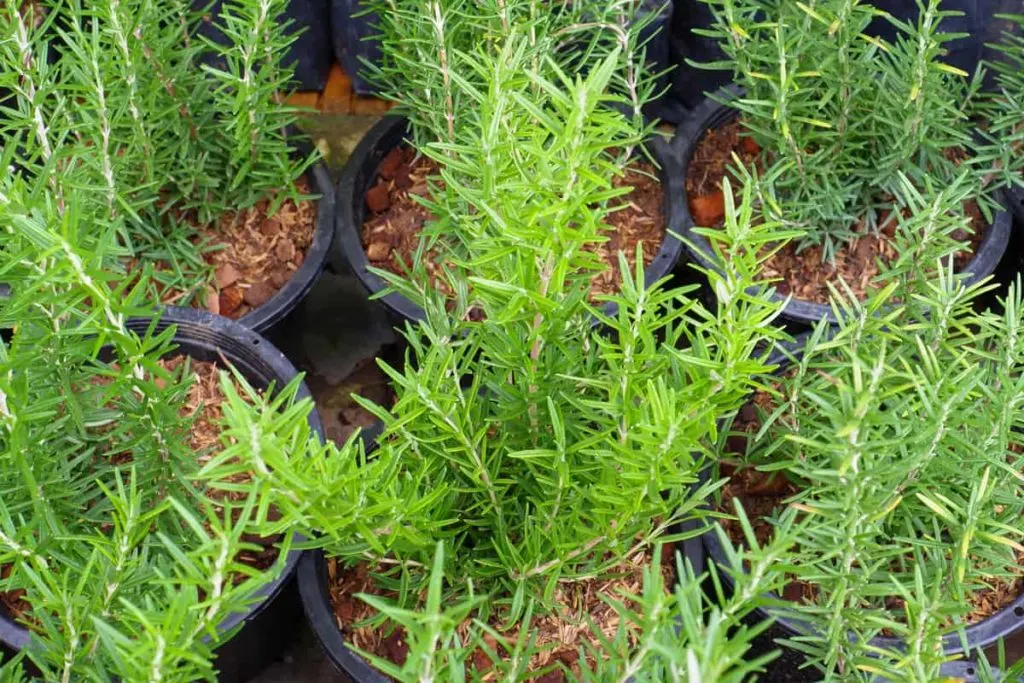
Caring for Your Rosemary Hedge
Mimicking the natural environment to its native growing conditions of the Mediterranean seaside is a sure way to have success growing rosemary. That is to say, warm, dry, and well-draining soil.
For companion planting, rosemary’s friends in the garden include sage, lavender, carrots, cabbage, and beans.
Enemies of rosemary are poor air circulation, high humidity, and heavy, damp, clay soils. These conditions may lead to diseases such as powdery mildew, botrytis, and root rot.
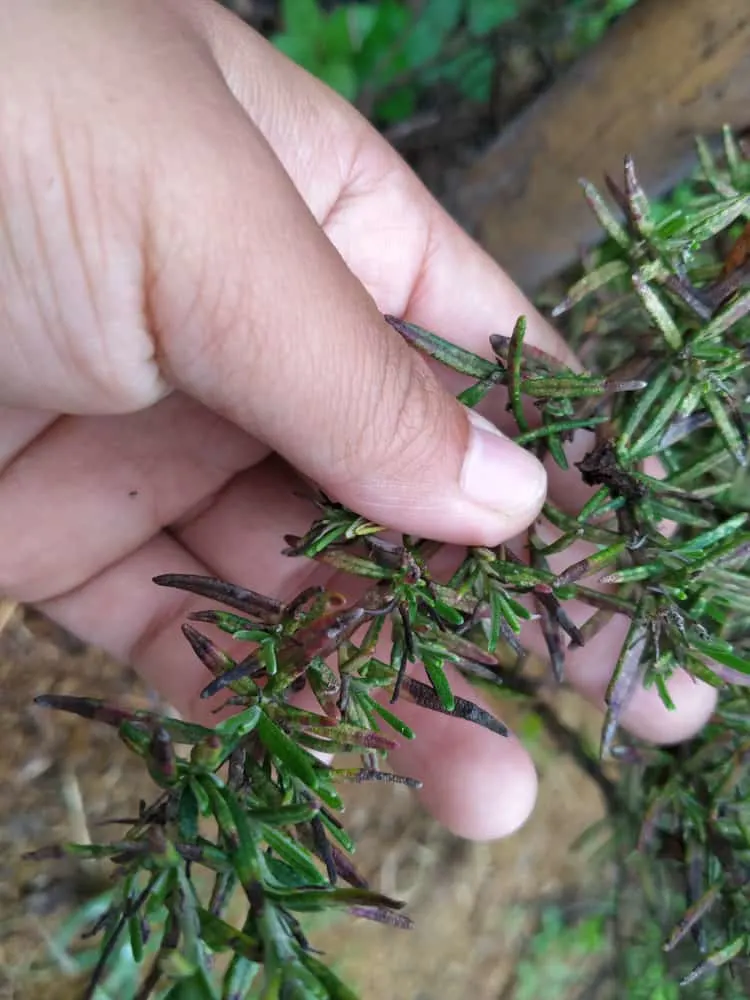
Insect pests are rarely a problem for rosemary growing outdoors in optimal conditions but may bother unhealthy plants. Keep an eye out for whiteflies, aphids, mealybugs, and spider mites.
Pruning and Shaping
Rosemary takes well to pruning and shaping. It helps the plant develop bushier, healthy growth as well.
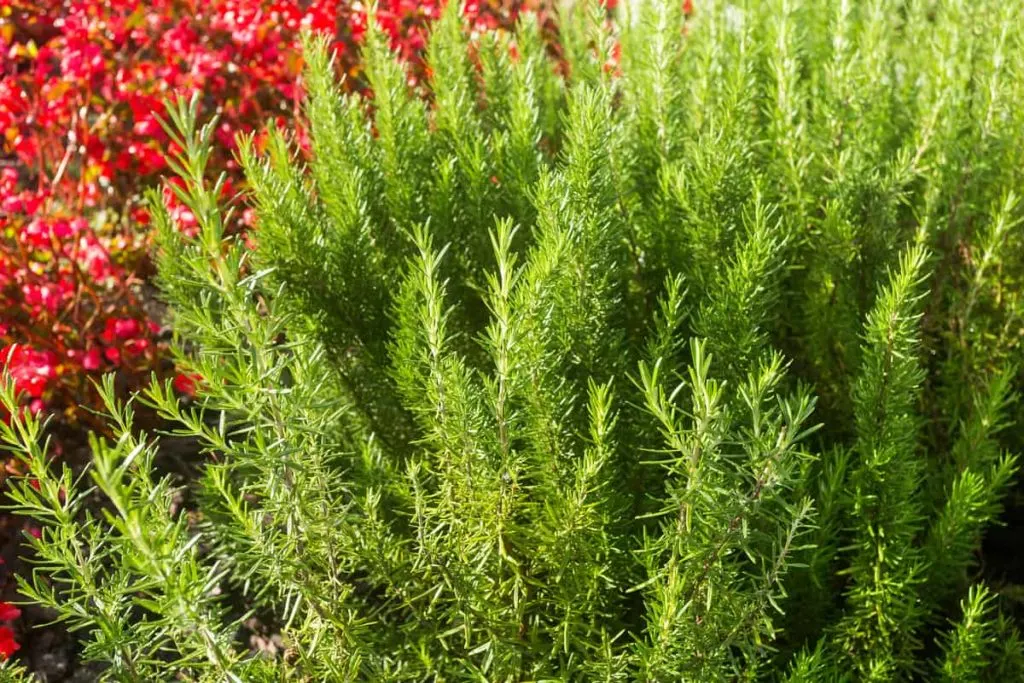
Always use sharp clean pruners, scissors, and shears for healthy cuts. And make sure you don’t throw away the cut off leaves and stems – they can be used in so many brilliant ways.
The best time to prune and shape is after the plant has flowered in the spring. Remember that rosemary blooms on last year’s wood, so pruning in the fall or too early in the spring may remove the spring’s blossoms.
